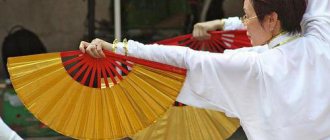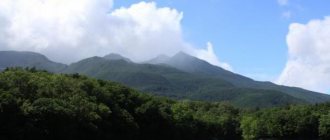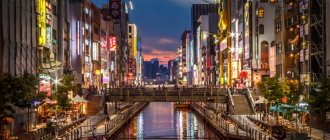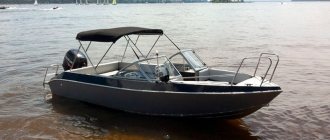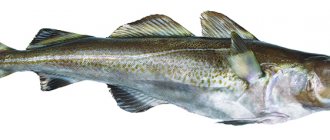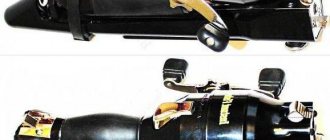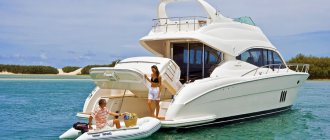Asia and Europe are complete opposites. It is very difficult for a European to understand how an Asian builds his life, what he thinks about, what rules he obeys. But still, eastern countries attract tourists with their beauty and originality; in addition, many Asian countries can boast of a high standard of living and new technologies introduced into the life of ordinary residents. Japan is especially interesting in this regard. Those who have had the pleasure of traveling around the Land of the Rising Sun will never be able to forget Japanese trains, covering many kilometers in literally a matter of minutes.
Japan is a country of high technology and patriarchal traditions
Japan is located in East Asia and occupies almost seven thousand islands. This geographical feature affects the entire way of life of the locals. The country's population of 127 million lives in large cities. Only less than five percent of all Japanese can afford to live outside the metropolis, and this division is very arbitrary. After all, in Japan it is difficult to find an area that would not be used for the benefit of the state. The Japanese are trying to build up every millimeter of land with various buildings; as a result, only coastal strips remain free, subject to periodic flooding.
But the Japanese have learned to deal with this problem; for many years now they have been moving deeper into the Pacific Ocean and the South China Sea, creating artificial islands. The severe shortage of free land forced Japan to develop a high-tech program for the settlement of water areas, which has shown itself very well over the past decades.
The peculiarities of Japanese life force the population to constantly move around the country. Every day, several thousand people travel from the suburbs to work at their offices located in Tokyo or Osaka. The Japanese high-speed train helps you avoid rush hour traffic and save time.
Shinkansen - high speed railways
For Russians, traveling by rail can hardly be called comfortable and fast. The average resident of our country, when going on vacation, tries to choose air transport. But in the Land of the Rising Sun, Japanese trains break all records for popularity and demand. This is a very special type of transport that can cover a distance of 600 kilometers in just a couple of hours.
High-speed trains and railways in Japan are called Shinkansen. Literally this name can be translated as “new main line”. Indeed, during the construction of this highway, the Japanese used a lot of new technologies and for the first time moved away from the traditional type of railway adopted in those days.
Now the Shinkansen connects almost all cities of Japan; the length of the line is more than 27 thousand kilometers. Moreover, 75 percent of the railway track belongs to the largest company in Japan - Japan Railwais Group.
History of development
The first railway line between Shinbashi and Yokohama opened in 1872. In 1881, the first private company, Nippon Railway, was founded. In 1889, construction of the Tokaido Main Line was completed.
In 1895, the first tram in Kyoto was inaugurated. That same year, Japan acquired a railroad in Taiwan.
In 1906, the opening of the South Manchurian Railway began. At the same time, 17 private railways were privatized. During World War II, Japan's railway network was significantly damaged. In 1949, the state corporation Japan National Railways (JNR) was created.
In 1958, the first EMU high-speed train was launched between Tokyo and Osaka.
Japanese bullet train: first launch
The need for new railway lines arose in Japan before the eighteenth Summer Olympics. The fact is that until that time the railway track was a narrow-gauge railway. This fact did not meet international standards and significantly slowed down the development of the industry. Therefore, in 1964, the first Shinkansen line was launched, connecting Tokyo and Osaka. The length of the railway was just over 500 kilometers.
At that time, Japan's high-speed trains broke all records, reaching speeds of 220 kilometers per hour. Despite the difficulties in the economy, the Japanese government was able to allocate funds for the development of the railway industry in the country. As a result, Shinkansen became one of the brightest symbols of the Land of the Rising Sun.
Joetsu Line - E7 and E4 train series, East Japan Railway
The E4 series (pictured) is unique in the Japanese railway fleet because it is a double-decker high-speed train
Capacity: 934 people (train E7), 1,634 people (train E4).
Maximum speed: 260 km/h (E7 train) and 241 km/h (E4 train)
The E7 and E4 series bullet trains are not obsolete, but are nevertheless the slowest in the railway fleet, with a maximum speed of 260 km/h and 241 km/h respectively.
However, the E4 series is unique in Japanese railway rolling stock because it is a double-deck train.
The train consists of eight carriages with a capacity of 1,634 seated passengers.
Development and features
Japanese high-speed trains were originally intended to be used as a means of transporting passengers and goods. But this plan was quickly abandoned, and now the Shinkansen carries only passengers. At night, the line is completely closed, and maintenance of stations and the railway track is carried out until six in the morning.
The new highway began to make a profit very quickly; within three years it had completely paid for itself due to the ticket price. Even now they are quite high. For example, a trip from Tokyo to Osaka will cost an adult $130. But for the Japanese, this amount is not too serious; they easily give this money for fast and comfortable movement around the country.
Nowadays, most Japanese trains reach speeds of 320 kilometers per hour. For this purpose, all the old lines have been redone, but the Japanese do not stop there. They are working on creating new lines on which the maximum speed will exceed 590 kilometers per hour.
Japanese high-speed trains carry up to 400 thousand passengers every day. The rapid development of the railway industry led to the decline of Japanese civil aviation. Domestic flights are practically not in demand, and air carriers are suffering huge losses. Many airlines are trying to attract passengers by reducing flight prices to the minimum limit.
What do Shinkansen trains look like?
Tourists call Japanese trains “bullet” or “platypus”, which is caused by the appearance of the train itself. It consists of 16 cars, the head car has a slightly elongated front part, reminiscent of a spout. It is worth noting that the Japanese paid great attention to the appearance of their high-speed trains. Almost all of them are painted silver with the addition of green or turquoise paint. It looks very impressive against the backdrop of city landscapes.
Up to ten trains can operate on one line at the same time; the interval even during peak hours does not exceed five minutes.
Is it convenient to travel on high-speed trains in Japan? Reviews
It is worth noting that the Japanese took a thorough approach to their trains and station design. As travelers note, everything is decorated strictly, but very convenient. Each carriage has soft chairs, and you can buy coffee and other drinks from special vending machines. During the journey, special people offer to buy lunch. Moreover, judging by the reviews of tourists, the menu is very diverse. You can try traditional Japanese dishes such as sushi and ordinary sandwiches known throughout the world.
The only thing that will not please you during the trip is the landscape outside the window. Almost the entire route runs through cities and industrial zones. During the journey, the landscape does not change, and it is difficult to see something beautiful and traditional for Japan. If you come to the Land of the Rising Sun in winter, keep in mind that beautiful winter and Japanese trains are absolutely incompatible things. You won't be able to enjoy the snow-covered gardens, although their replicated views are one of the hallmarks of Japan. All the beauty of Japanese gardens is concentrated in city parks; outside their boundaries, a dull industrial landscape will appear to the eyes of the tourist.
The stations where the trains stop are very strict, but it is not difficult to navigate inside. At each station there are many signs made in different colors. Even intuitively, a tourist can understand where to go and where to buy a travel ticket.
High speed Japanese train uncensored
Since almost the entire population of a country of many millions uses the services of high-speed trains, it is not surprising that the life of every Japanese is connected with them. The stories of Japanese erotomaniacs who deliberately travel by public transport during rush hours in order to grope women have gained great popularity in the media.
The fact is that during peak hours people are literally packed into the carriages. There are even specially trained people at the stations. They work equally successfully in the subway and at railway stations, where several thousand people gather at the same time at certain hours.
Such closeness to each other, not accepted in Japan, became the impetus for the development of a special type of perversion - groping. Japanese men position themselves closer to the woman and try to touch her intimate parts, and many do this deliberately rudely and brazenly. This led to the fact that during peak hours the railway transport began to be called the “Japanese pleasure train”. Such violence lasted for several decades and reached its apogee at the beginning of the 2000s. The police officers to whom the detained men were brought nicknamed them “tikans” or “chikanas.” During the year, the police carry out more than two thousand arrests of tikans, most often the women themselves bring them to the station. Japanese women are no longer ashamed of such cases and are actively fighting against perverts. Although, according to reviews from women, there are no fewer tickers on trains. Moreover, their number is only increasing every year.
West Japan Railway Company
West Japan Railway Ob. has a length of railway. 5067 km, including 4434 km with 1067 mm gauge and 653 km with 1435 mm gauge (on the Shinkansen network). 646 km were electrified on alternating current (25 kV, 60 Hz) with a gauge of 1435 mm, with a gauge of 1067 mm - 317 km (20 kV, 60 Hz) and 2064 km on direct current (1.5 kV). In 1999, the volume of passenger traffic amounted to 1888 million people, passenger turnover - 55.971 billion passenger-km. There are 59 electric locomotives, 81 diesel locomotives, 4,479 electric train cars, 722 diesel train cars, 457 long-distance passenger cars, 294 freight cars, 61 high-speed trains in operation.
Cars “Only for women”
In order to combat perverts, the Japanese government introduced special women's carriages as an experiment. They run in the morning and evening hours. On holidays, one train includes two carriages with a “Women Only” sticker.
This practice was highly appreciated by Japanese women. They can comfortably travel on high-speed trains without worrying about ticks. Women with children and disabled people of any gender can travel in women's carriages. Initially, such carriages were introduced on the most popular routes, but now “Women Only” carriages can be seen on any railway route in the country.
Types of high speed trains
High-speed trains in Japan are divided into several types, they differ in the class of cars, speed and ticket price. The most expensive and comfortable are “nozomi”. These trains are capable of reaching speeds of more than 300 kilometers per hour. The number of stops on their route is limited; many tourists consider them an express train. Cars in such trains are among the most comfortable in Japan; their design is carried out by advanced companies known for their work for Japanese corporations.
The second category includes “hikari”. They make a little more stops, tickets for their route will be at a reduced cost. But the class of cars is not very different from the “nozomi”, and the travel time increases by only 30 minutes.
Kodama trains are the slowest and stop at all major stations, which significantly increases travel time. For example, the time difference between Nozomi and Kodama on the same route is one and a half hours.
Yamagata Shinkansen Line, E3-1000 and E3-2000 series trains, Japan Western Railway
The E3 train series is a slightly narrower high-speed train and serves the Yamagata Line at speeds of up to 275 kilometers per hour.
Capacity: 394 people
Maximum speed: 275 km/h
Another train that travels at a speed of 275 km/h for part of the journey, but once the tracks branch, the train to the Shinjo terminus travels at a maximum speed of 128 km/h.
Maglev - the future of Japanese railways
Japanese specialists are constantly working to improve transport, which is so popular in the country. There are already lines along which magnetic levitation trains have been launched. True, this type of public transport is still at the experimental stage. But it is worth noting that the experiment has already proven to be very successful. For example, a new Japanese train, launched in test mode, managed to exceed a speed of 600 kilometers per hour. Several magnetic levitation trains already operate between major cities in Japan on a regular basis, but their speeds do not exceed 500 kilometers per hour.
It is likely that in the future all the country's railways will be switched to a new mode of operation, and Japanese trains will again break all world speed records.
Akita Line, Train E6, Japan East Railway
E6 series trains such as Akita reach an average speed of 128 km/h. Although the train in some sections travels at a speed of 320 km per hour.
Capacity: 336 people
Maximum speed: 320 km/h
The E6 train runs on a mini-high-speed line, part of which runs along the Tohoku railway line, which allows the train to accelerate to 320 km per hour.
However, as soon as the railway branches west towards Akita, the train's maximum speed drops from 320 to 128 km per hour.
see also
Chinese train with a top speed of 600 km/h will become a reality
High-speed underwater tunnels
The island location of Japan gave specialists the idea of creating underwater tunnels, which would relieve congestion on land railways and the subway. The project is still under development, but it is already known that it will connect major cities with the island of Hokkaido, and the length of the line will be 54 kilometers.
Japanese specialists plan to complete all calculations by next year, and four years later begin construction of a new high-speed highway, which will pass under the Tsugaru Strait.
It is unknown what the future of Japanese high-speed trains will be, but one thing is certain now - they will be the fastest and most comfortable in the world. Otherwise, in Japan they simply don’t know how.
General information
From 1960 to 1987, the volume of transportation on the Yanzhd in the national volume decreased: in passenger traffic - from 51% to 22%, in freight traffic - from 40% to 5%. Losses of YANZD in the 80s. amounted to 1 trillion yen per year; the total debt to the state increased by 1987 to 37 trillion. yen
In 1987, almost the entire range was divided between 6 passenger companies, which, together with the freight railway. The company and other enterprises formed the Japanese Railways group - GYAZH (Japan Railways Group).
East Japan Railway Co owns the railway. length (2001) 7538 km, including 6582 km with 1067 mm gauge and 956 km with 1435 mm gauge (in the Shinkansen network). 2677 km (on direct current 1.5 kV) and 1889 km (on alternating current 20 kV, 50 Hz) with a gauge of 1067 m and 956 km with a gauge of 1435 mm (25 kV, 50 Hz) were electrified. In 1999, the volume of passenger traffic amounted to 5907 million people; passenger turnover 126.1 billion passenger-km. There are 156 electric locomotives, 139 diesel locomotives, 11,601 suburban electric train cars, 592 diesel train cars, 505 long-distance passenger cars, 562 freight cars, 90 high-speed trains in operation.
